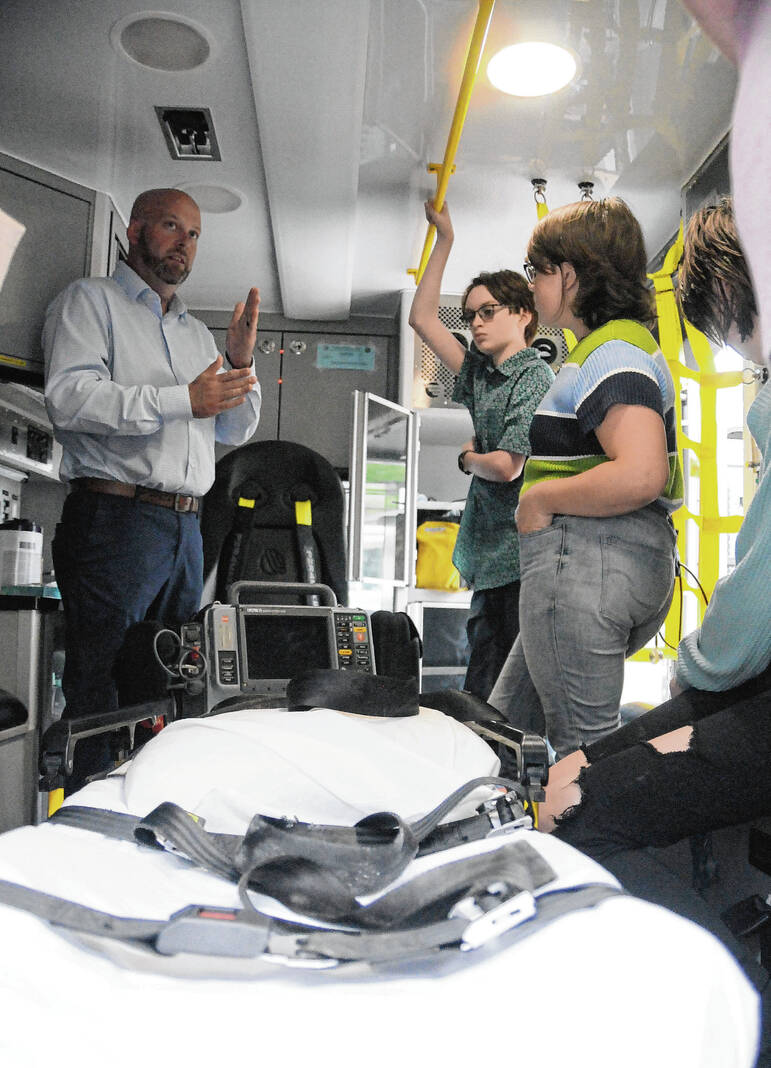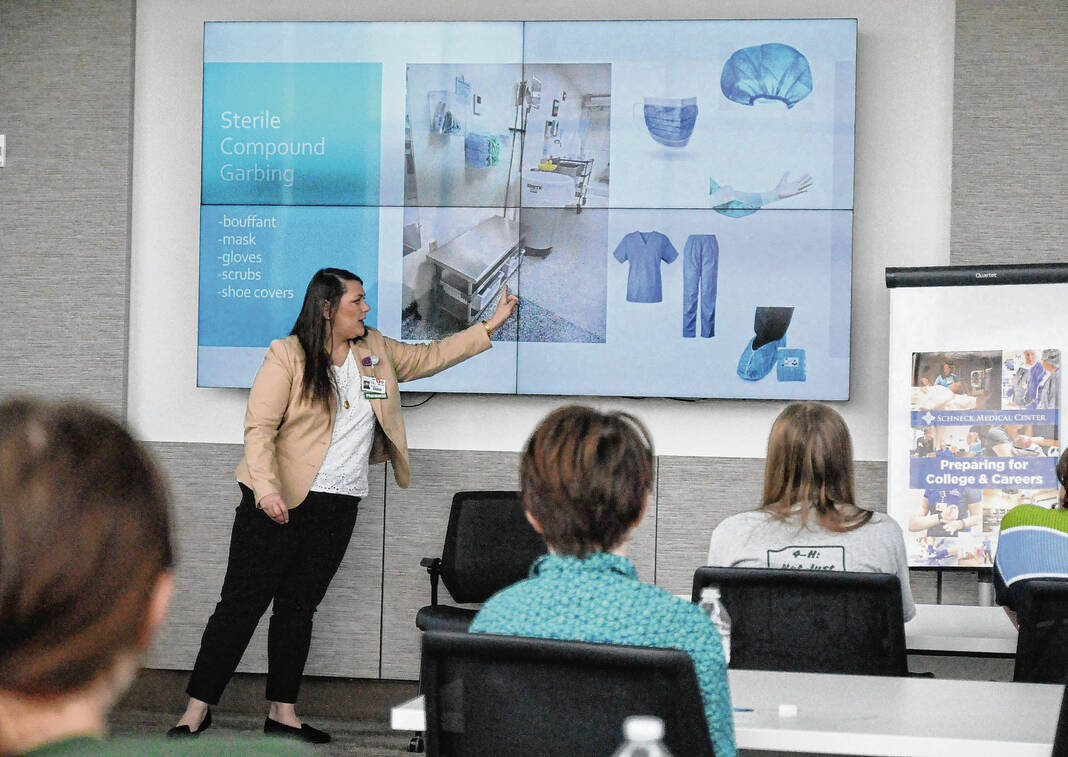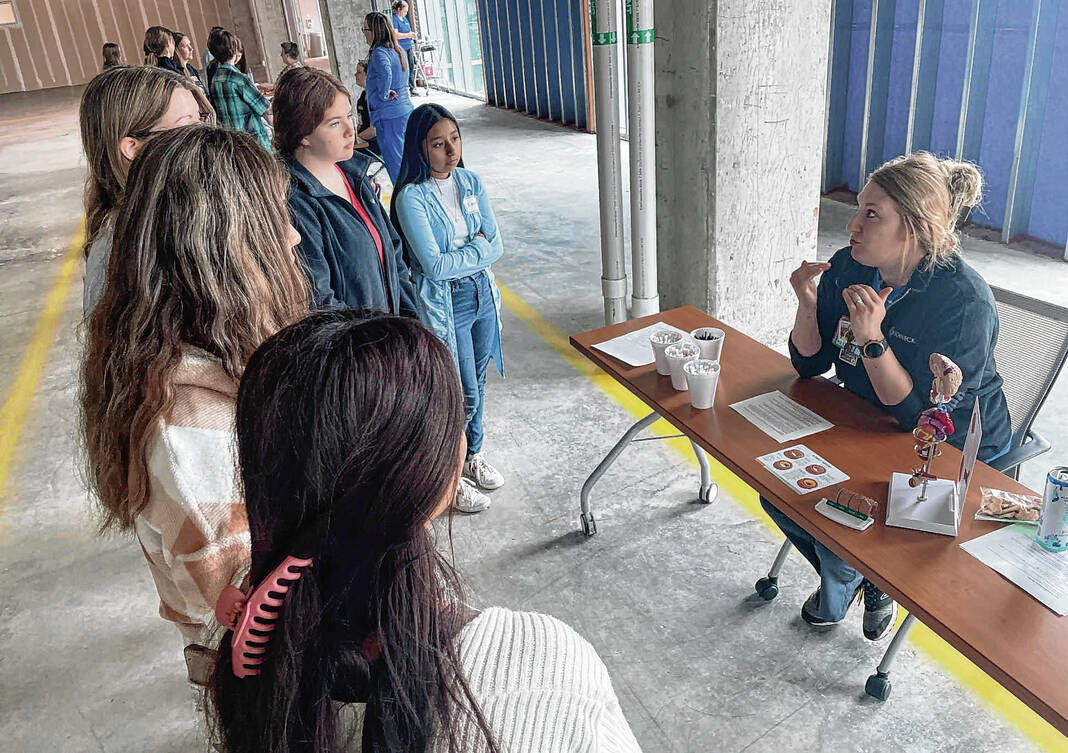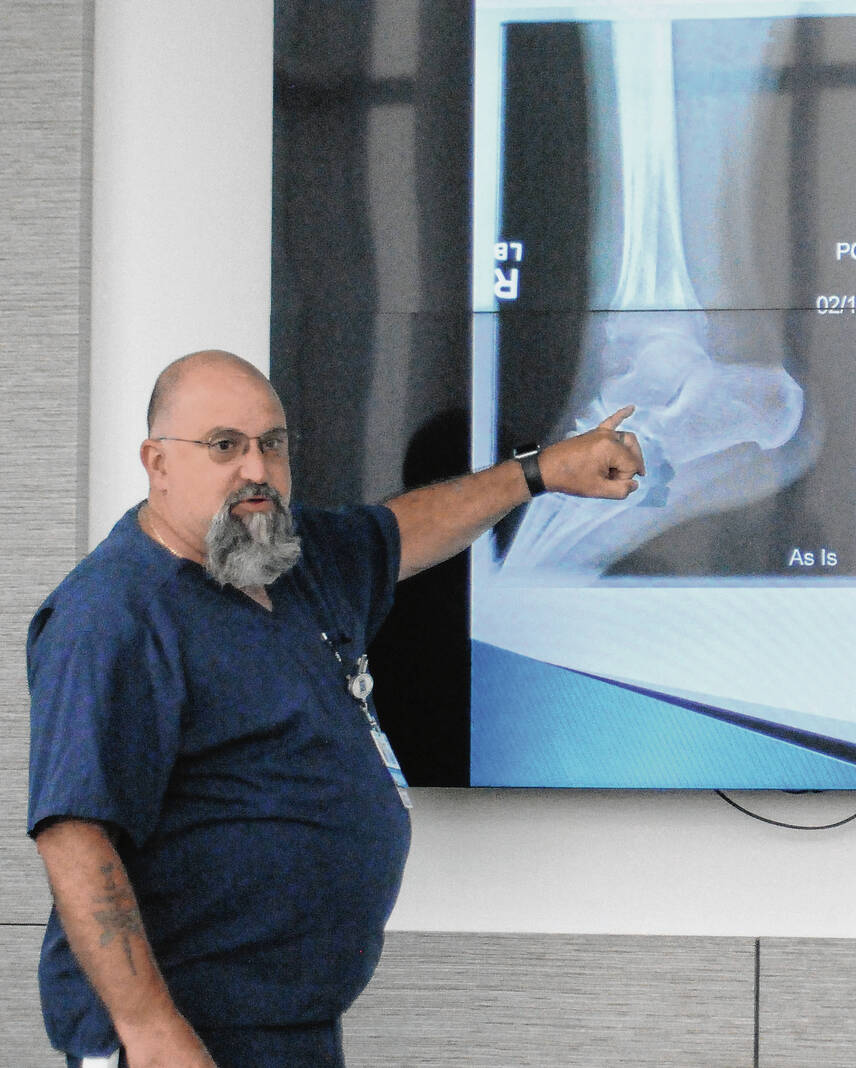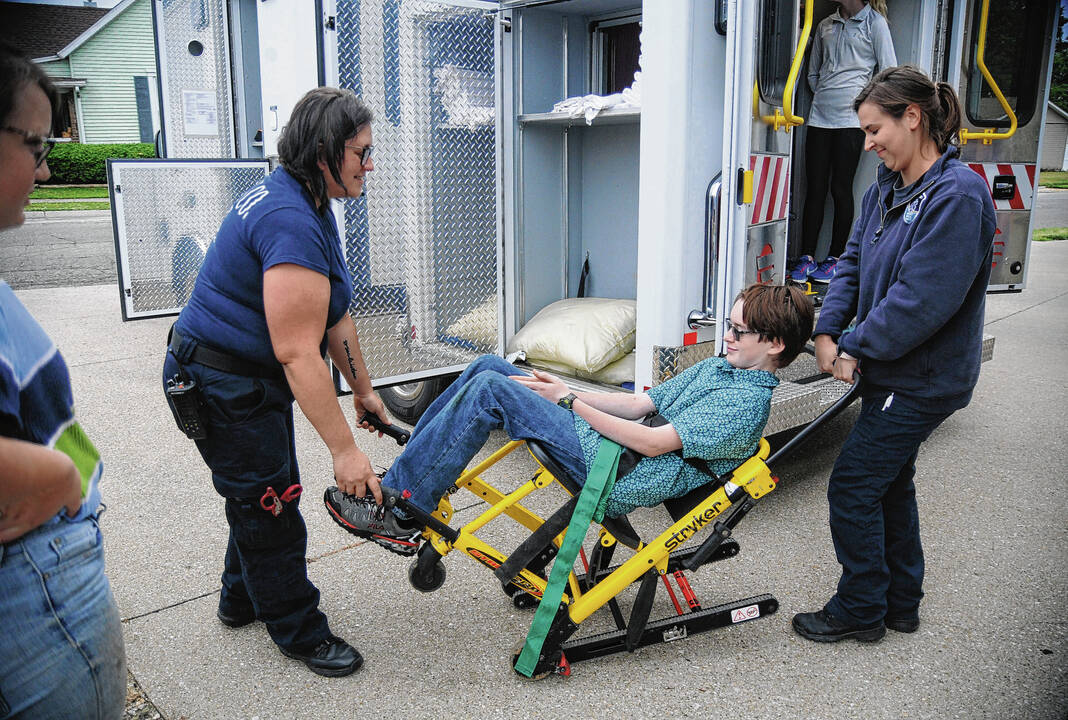Doctors and nurses are important to a hospital, but it takes many other people to make it function.
Medical assistants, phlebotomists, physical therapists, respiratory therapists, accountants, human resources, information technology, environmental services, nutrition services, emergency services, plant operations, pharmacists, secretaries, administrators and more also are crucial for the everyday operations.
Charlene Mellencamp, an IT manager at Schneck Medical Center in Seymour, summed it up best while talking to middle and high school students during Friday’s session of the Health Career Discovery Program.
“It takes a little bit of everybody to make this facility work,” she said.
That’s the idea behind the free program that’s offered two days each June to expose youth to the variety of career opportunities available in health care. This year, it drew 18 boys and girls.
“I hope they realize all of the opportunities that Schneck has and that health care can have for them beyond just the clinical roles,” said Emily Burgess, a human resources generalist at the hospital who organizes the program.
“That’s typically what we focus on. That’s our highest need, of course — nursing, medical assistants, certified nursing assistants, respiratory therapists,” she said. “But I hope they realize there’s a lot more than that and that we are happy to have them job shadow. We have a lot of internship opportunities to apply and do a position in high school. They can work for us for a few hours here and there and really get to see up close what goes on.”
On the first day of the program, students heard from Schneck employees in human resources, laboratory, respiratory therapy, surgery, anesthesiology, nursing and emergency department. That included participating in a simulation code and a variety of interactive nursing activities.
The second day included talks from diagnostic imaging, emergency medical services, medical helicopter staff, pharmacy, IT and nutrition services. That included a hospital tour, visiting the EMS and medical helicopter stations and sampling healthy snacks.
Burgess also talked to the students about other opportunities to explore health careers.
For job shadowing, a person has to be at least 16, fill out an application and provide proof of immunizations.
“A lot of people will do shadowing on summer break or school breaks, like in the winter during Christmas when you’re off for a couple weeks or spring break if you don’t happen to go on a trip. You can stay here and you can arrange a shadow,” Burgess said. “Typically, it’s a half-day, four hours. Sometimes, people do eight-hour days.”
Burgess said job shadowing gives people a chance to see if a certain type of job would be for them or not.
“You’ve got to think about your future, like what kind of hours do you want to work, do you want to work holidays, do you want to be in surgery and see the blood, do you want to be in the lab and draw blood. You have to decide for you if you want to do that or not,” she said.
“Also, there are different pay scales for different jobs, so that’s something that we try to be pretty upfront about. Now, we actually post our starting pay ranges on our job postings on our website, so if that’s something you are curious about, you can get an idea of what a position would make,” she said. “Of course, we pay people more if they have experience.”
Burgess said some hospital positions require an associate or bachelor’s degree, but some require at least a high school diploma, some that are available for students and some that don’t require a license.
She said Schneck has several certified nursing assistant students, and the hospital no longer requires a license to do that. Those people are trained on the job and someone oversees the care they provide. Schneck also has phlebotomist students who are trained on the job.
“That’s something you can do in high school before you graduate, and then if you do want to work while you’re in college or pursuing higher opportunities, you can also work as a phlebotomist, CNA and then medical assistant,” Burgess said.
If someone is in nursing school, they can be a nurse extern or intern at Schneck.
“A lot of times, we do hire full-time nurses from our nurse intern pool that works here, so it can be a good way to get your foot in the door and potentially have a job when you graduate with us here,” Burgess said.
Once an employee of Schneck, tuition assistance is offered for those pursuing higher education.
There also are scholarships for nursing students and junior volunteers. The latter program is underway this summer.
“We have a volunteer manager here that does a really great job of trying to place students in different departments to volunteer, and you just volunteer once a week for June and July for four hours,” Burgess said, noting she did the junior volunteer program in high school.
Taylor Spicer, an incoming junior at Trinity Lutheran High School in Seymour, said she did the junior volunteer program in the summer of 2022. Then last week, she participated in the Health Career Discovery Program.
Last summer, she helped greet people coming into the hospital and cleaned wheelchairs.
“I just wanted to get more feel for how it was every day being around a hospital and where things were and how it ran,” she said.
Going into the discovery program, she had a goal of becoming a neonatal intensive care unit nurse. After the two days, though, her eyes were opened to other possibilities.
“There are other options that I feel like I’d also like to do that I didn’t know about, like a pharmacist or respiratory therapy or ones that I haven’t really heard as much about as you do with nursing and doctors,” Spicer said.
Trinity classmate Abbygail Lorenz also participated in the discovery program because she wants to work in the health care field.
“I’m going to shadow someone, more than one person, because I want to just explore everything,” she said. “I want to shadow maybe this summer or during school time, but soon.”
Right now, she’s interested in music therapy or some other type of therapy.
“But then through here, I also thought it would be cool to be a respiratory nurse,” Lorenz said.
That’s what the program is all about, exploring the variety of careers in health care.
“I think especially if you’re in middle school, it really gives you time to figure out what you want to do before high school if you have a really good idea,” Spicer said. “I wish I did more of these before I hit junior year already, but it makes it better to really try and figure out what the things are that you want to do, things that you see and you’re like, for some reason, you just feel a connection.”
Lorenz said she learned a lot.
“I got some more information about the different opportunities and the different jobs that you can do and what you have to do to go into those jobs, like the different degrees you have to have and all the work that gets put into it,” she said.
Burgess said she appreciates all of the hospital employees who took time to share their expertise with the students.
“It’s our future,” she said of the students. “We try to make it a little bit different each year. Some things might be the same, but if you’re, say in middle school, you may want to wait a year or two and come back and check it out again as you take more classes and discover what you would like to do.”
For information, visit schneckmed.org/careers, call human resources at 812-523-4841 or email Burgess at [email protected].



